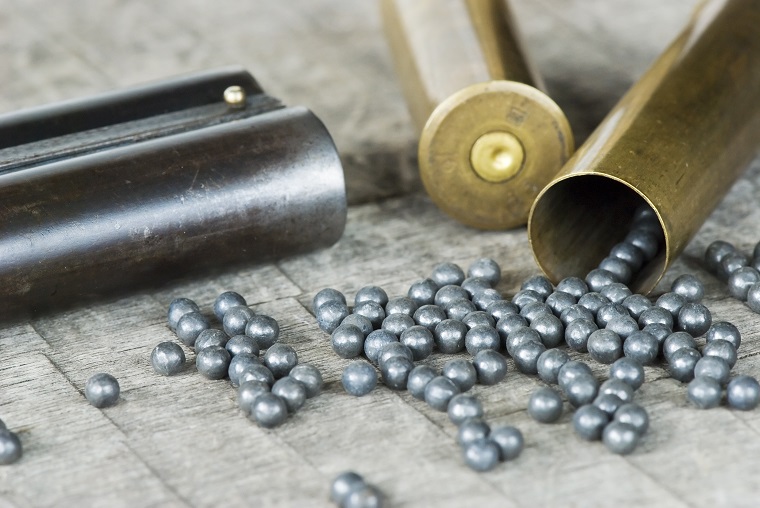Biting the Bullet: Why Some Canadians and Wildlife Literally ‘Eat Lead’
By Michael Lim
5 April 2019

Stretching beyond pop-culture sayings, the history of humans and lead is deeply intertwined. For millennia, humans have incorporated lead into a variety of products including pipes, art, and even some cooking ingredients. As the toxic effects of lead became evident, its use dwindled, with modern regulations targeting products such as gasoline and paint. Unfortunately, lead is still used in the manufacturing of several products such as fishing weights and ammunition, and it continues to be linked to detrimental human health effects and the death of wildlife. A new paper by Prof. Vernon Thomas in the Department of Integrative Biology suggests a path forward: lead alternatives exist, and Canada must take a firmer stance on transitioning to these alternatives to reduce lead in fishing, hunting, and automobile manufacturing.
Restrictions on lead use exist around the globe, but the scope of these restrictions varies greatly among and within countries. For example, Canada has banned the use of lead in fishing weights (for example, in sinkers and worm weights), but only in national parks. With only about three percent of inland water bodies controlled at the federal level, this leaves a large portion of Canada’s inland water at the discretion of provincial regulations (or lack thereof).
Fortunately, using research to tackle policy issues has been Thomas’ personal mission for the last several decades not only in Canada but also abroad, including Spain, Denmark, the United Kingdom, and the United States.
“Sometimes it’s not about doing more science,” says Thomas. “Rather, it’s about helping to translate science into something that can help change and shape policy and law.”
Thomas examined current regulations in Canada along with the estimated use and potential routes of pollution for different lead products, ultimately focusing on three main items: wheel weights, fishing weights, and ammunition. Roughly 120 tonnes (the same weight as approximately 80 cars) of lead wheel weights are lost into the environment annually. These degraded lead weights can leach into waterways and soils, persist for hundreds of years, and present a significant source of exposure to both humans and wildlife. The situation is even worse for fishing weights, with roughly 460 tonnes (or about 306 cars’ worth) of lead fishing weights lost annually in Canada. Aside from leaching into waterways, fishing weights can also be ingested by loons and other aquatic birds. Once ingested, the acute dose is so high that death is almost certain. Poisoned animals can be eaten by scavengers or humans, poisoning them in turn. The amount of lead ammunition lost to the environment is more difficult to quantify, but can leach into soils and water, or be eaten by scavengers or small animals mistaking small gunshot for grit or food. Lead ammunition can also become embedded in the carcasses of hunted animals and, if not properly removed prior to cooking and eating, poses a direct health risk to humans.
Luckiy, there are already lead-free alternatives available that can replace each of these products. For example, stainless steel wheel weights are used in a variety of newer cars, especially those in countries banning lead weights. Likewise, fishing weights can be made from other metals such as stainless steel, tin, and tungsten compounds, bullets from copper, and gunshot from soft steel and bismuth. Each of these products is similarly priced or only marginally more expensive than their lead counterparts. For Canadian manufacturers of lead products, transitioning to non-lead alternatives will ultimately be necessary to compete in some foreign markets, such as selling cars to countries and/or US states that ban lead wheel weights. Weighing the small possible increases in production costs against the health of the environment, sustainability of hunting and fishing sports, and the risks to human health and infant development (lead exposure is associated with lower IQ), it is clear that there is much to be gained from transitioning away from lead.
According to Thomas, effective transition away from lead will require increased federal legislation – for example, through the Canadian Environmental Protection Act. Patchwork solutions at the provincial level can lead to inconsistencies in Canadian products as well as penalties for unintentional lawbreakers.
In the meantime, Canadians should make an effort to find out what materials are in what they are buying, and to choose non-lead substitutes whenever possible. For hunters who continue to use lead ammunition, it is literally a matter of life and death to remove lead pellets and bullet fragments from game meat and to properly dispose of or bury poisoned meat and entrails to avoid attracting scavengers.
To Canadian policy makers, Thomas offers a stern message: “It may be convenient to put off action, but through improved lead regulation Canada can become an international example. Don’t leave a toxic legacy in your wake.”
Read the full article in the journal Science of the Total Environment.
Read about other CBS Research Highlights.